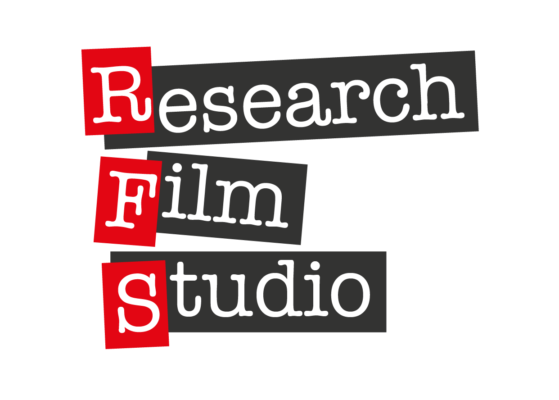C
urrent Projects
Angelus Novus
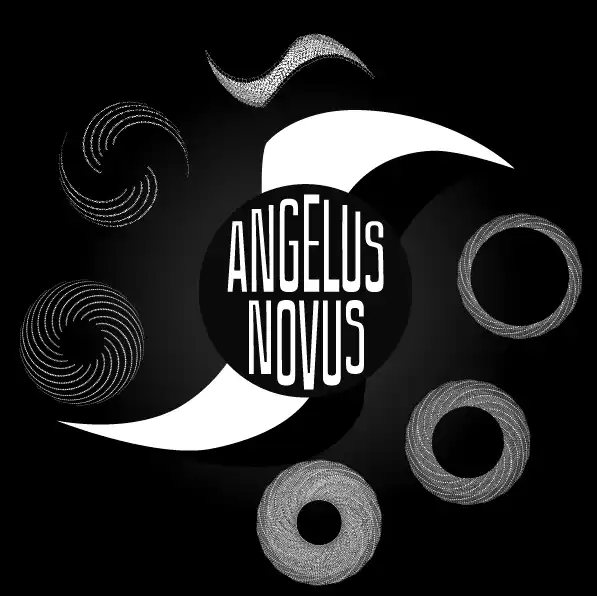
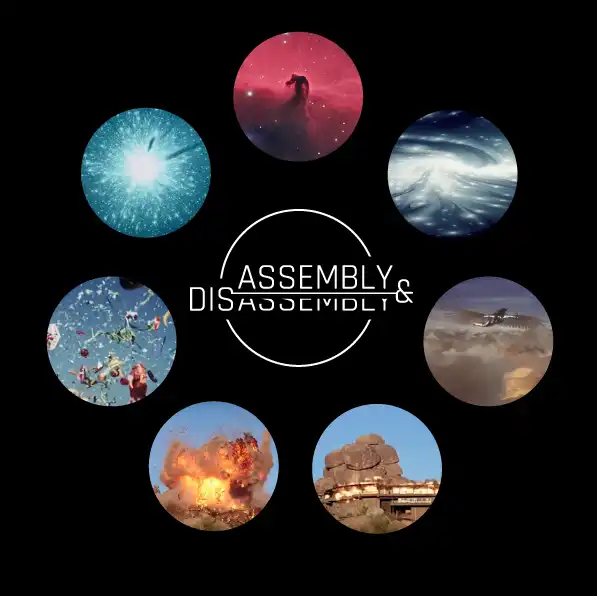
TIME, SPACE, EXISTENCE EXHIBITION
Palazzo Mora, Venice, Italy
Architecture Biennale
May 20 to November 26, 2023
Inspired by Brunelleschi’s dome of the Santa Maria del Fiore and Klee’s artwork Angelus Novus, the Form Finding Lab and the UCHV Research Film Studio of Princeton University, together with architects and engineers at Skidmore, Owings & Merrill (SOM), present an exhibition that explores new possibilities for the self-balancing vault—a construction method that has enabled centuries of architectural innovation. In the garden of Palazzo Mora, the Angelus Novus Collaborative displays a self-balancing masonry vault constructed using augmented reality (AR), and a digital film-fresco that is viewable in two ways: on an LED panel, and on the vault itself via an interactive AR application.
In self-balancing vault construction, the balancing emerges from the local interactions between the bricks without any external support, even during the process of assembly. This invention was prompted by the 1418 architectural competition that stipulated that the vaulting of the main dome of the Florence Cathedral should have no supporting buttresses. Brunelleschi, the winner of the contest, went even further: his engineering solution eliminated the need for the expensive, temporary external supports traditionally used in masonry construction during the settling of the mortar.
Beyond a practical solution for sustainable and safe construction, Brunelleschi invents a new natural order of balance in a curved grid. The dome assembled this way not only adapts to gravity but conquers it by implying its architectonic opposite: lightness. It is an engineering feat with no fixed blueprint, yet the Angelus Novus project manages to capture it in form of mechanics-based algorithms. When these algorithms are animated by AR technology, the visualization can guide today’s masons in efficient material use and the reduction of waste. Constructed by hand using an AR interface to guide the placement of each brick, the vault structure at Palazzo Mora shows the potential of combined human and machine intelligence. Similarly, Klee’s painting, in which Angelus Novus is depicted by the overlapping contours of a human, a bird and an airplane, imagines human invention flying on the wings of mimesis and technology.
Both Brunelleschi and Klee break with the classical object-oriented conception of space bound by a fixed, single-point perspective. They both teach us how to think outside the box in a curved grid. Brunelleschi’s vernacular engineering solution anticipated the design revolution of the early twentieth century, in which the conventional difference between architecture and structural engineering is dissolved; the clarity of a tight, minimalist economy of structural relations informs the engineering performance of a self-balancing choreography at the intersection of architecture, engineering and art. Thus, art becomes architectonic, while engineering becomes art.
One of the multiple functions of architectural structures, from caves to cupolas, is to communicate ideas persuasively to the public. The film-fresco entitled “Assembly & Disassembly” visualizes the analogy between architecture and the architectonic language of the universe, transforming NASA images and arthouse film clips. The film-fresco is also mapped onto the bricks of the vault so that the same interactive AR technology that was used to aid the masons in construction can guide the visitors’ imagination in the virtual construction of a full dome.
The Curious Adventures of William Monroe Trotter
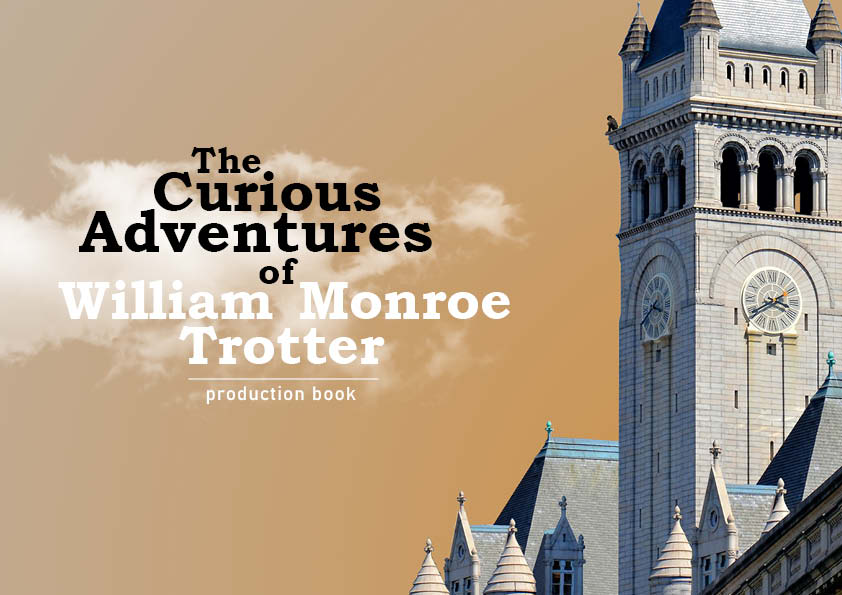
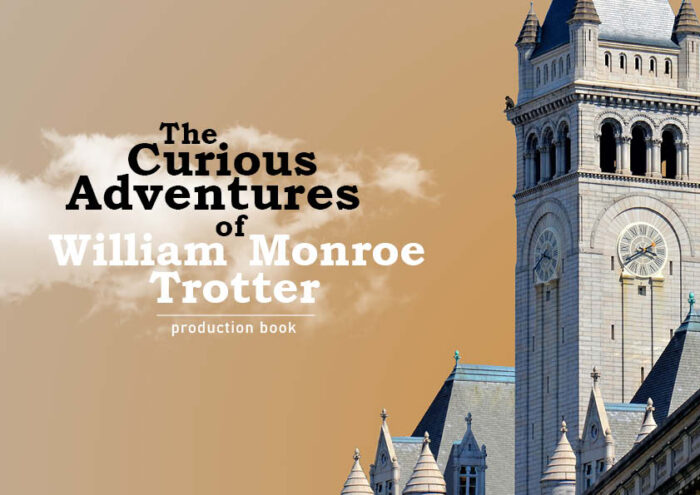
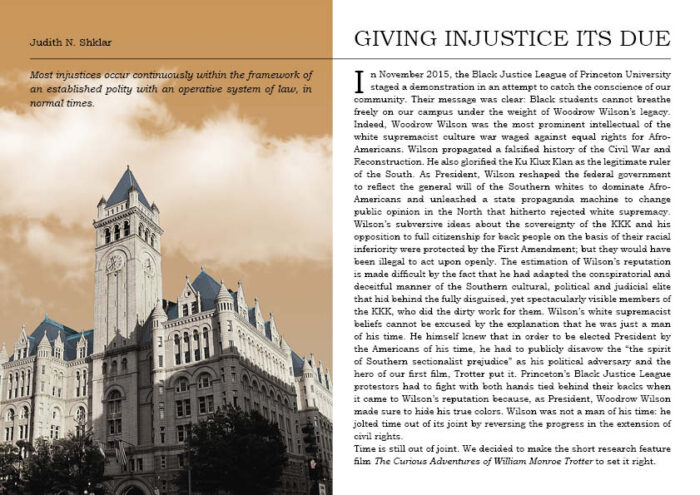
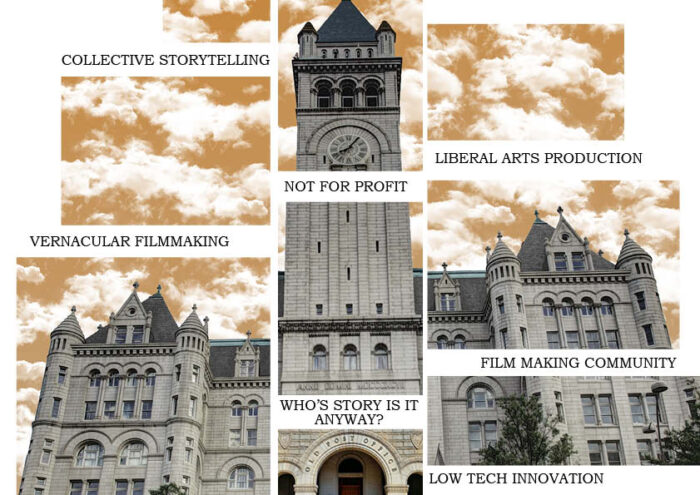
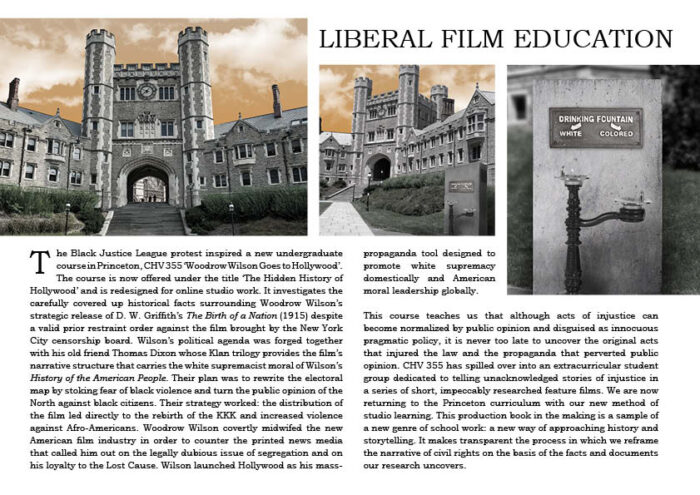
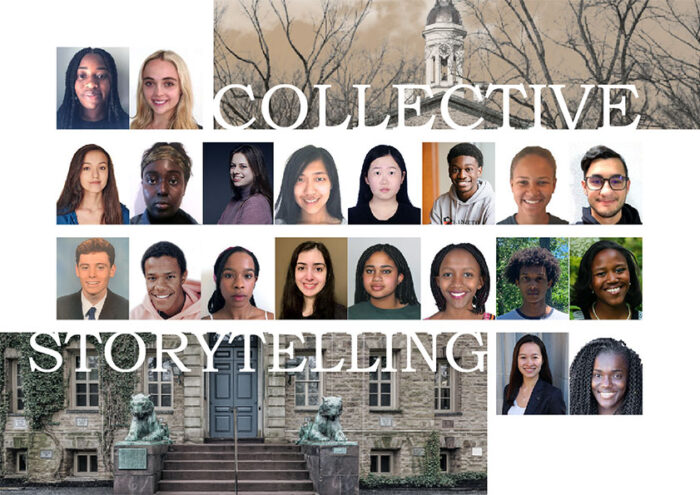
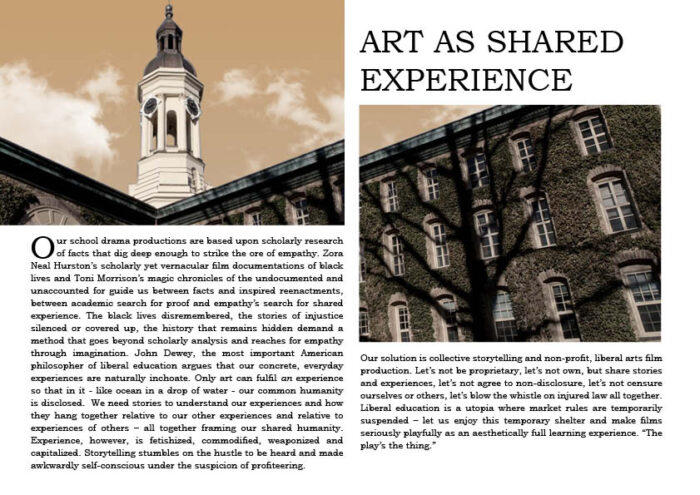
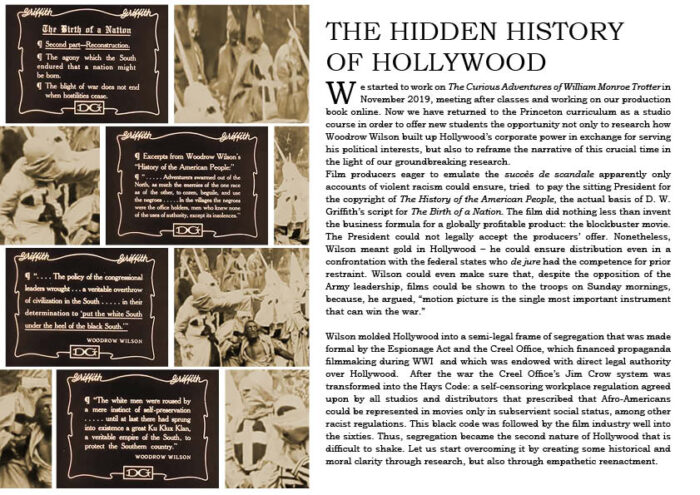
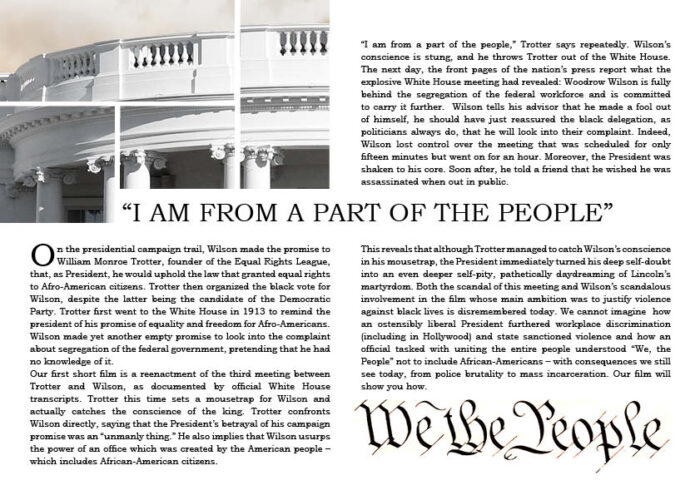
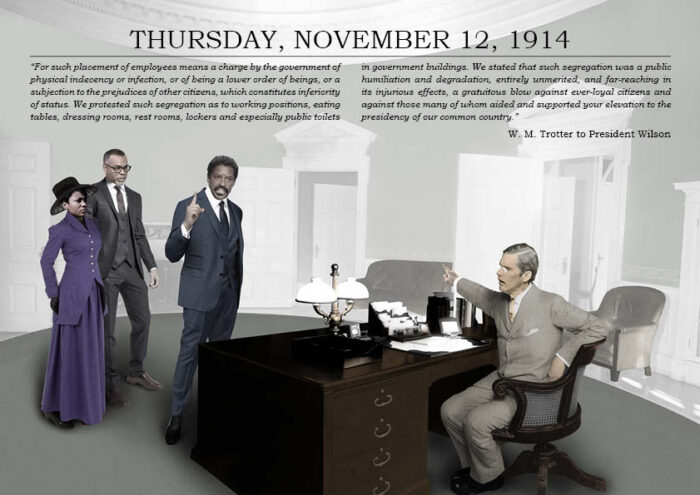
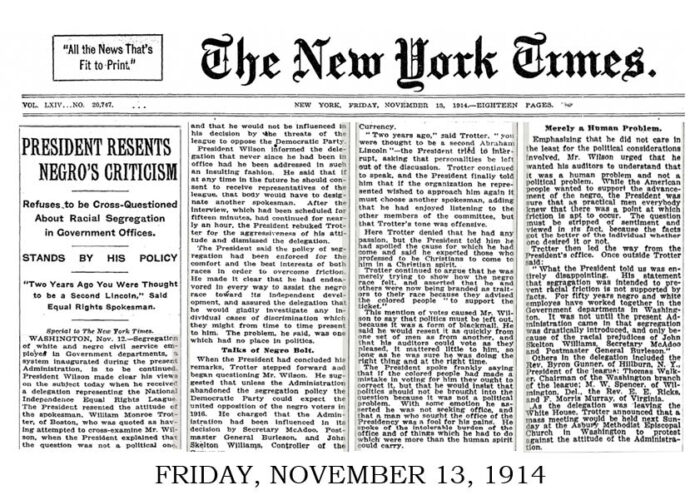
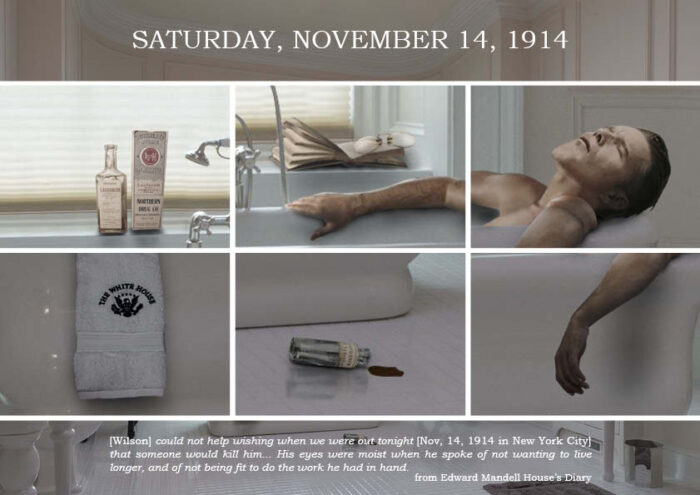
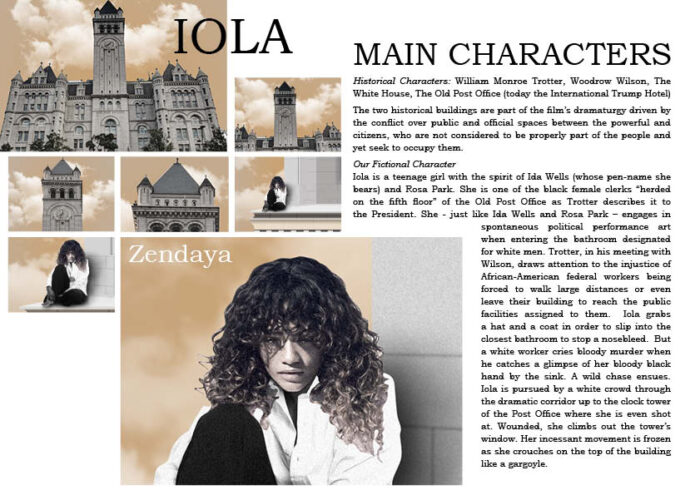
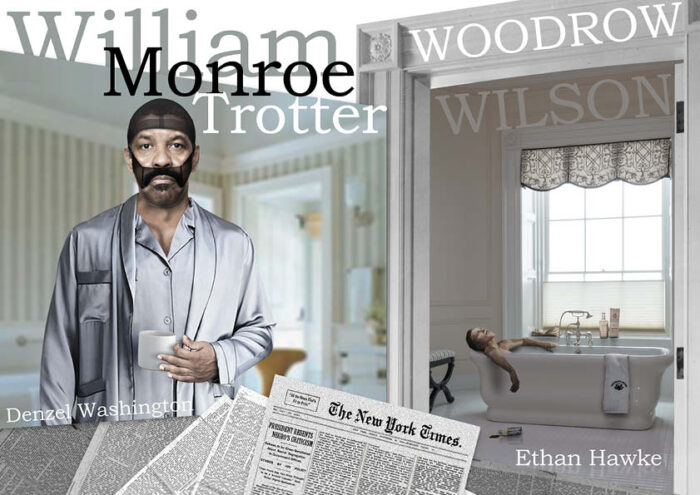
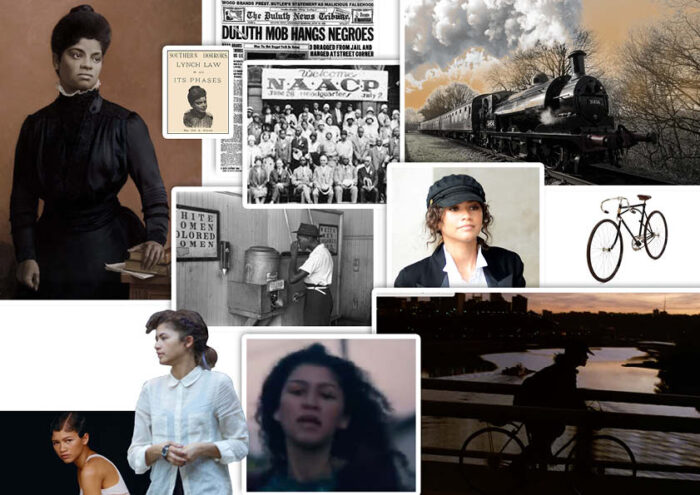
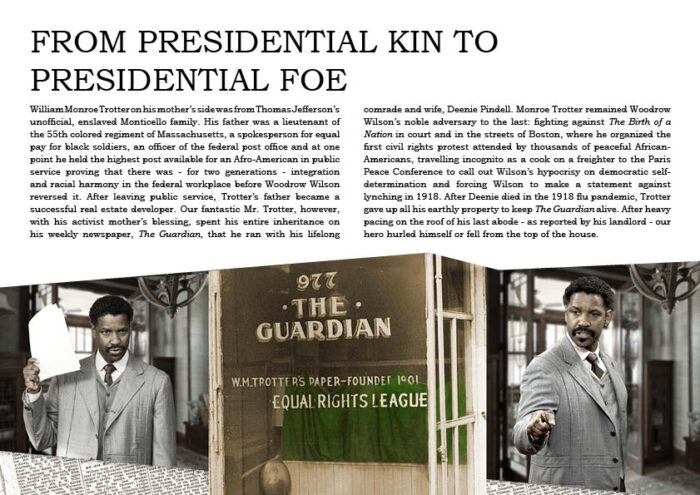
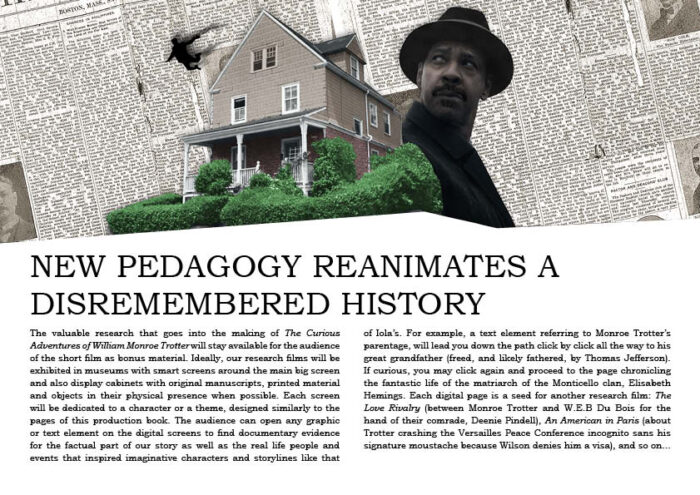
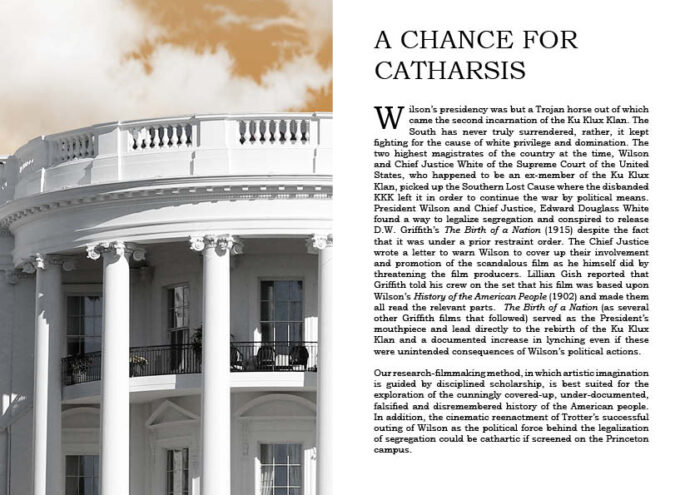
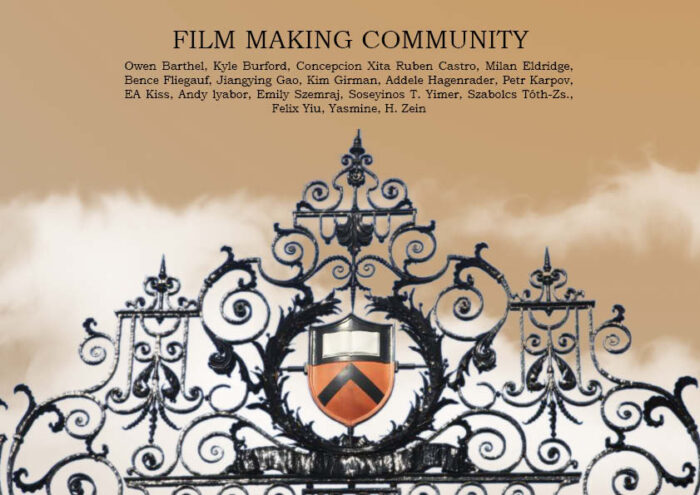
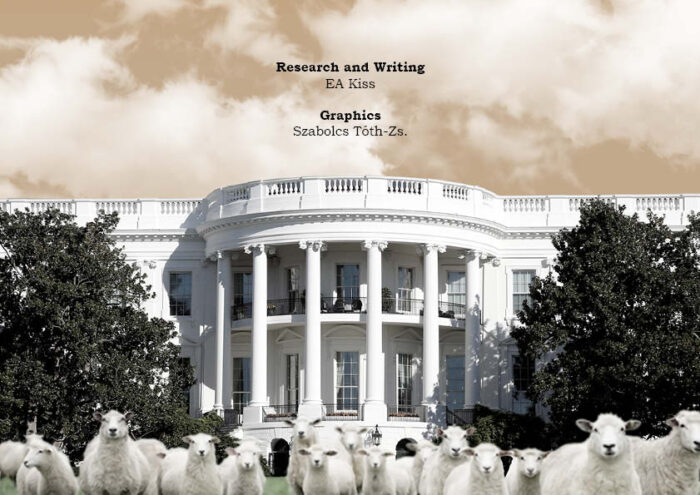
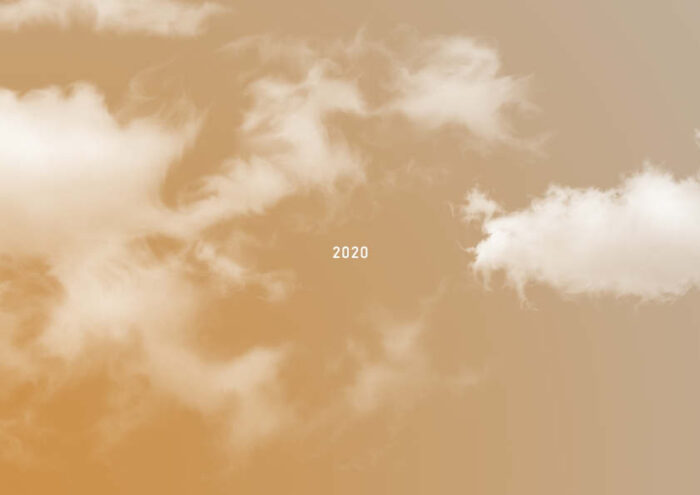
Woodrow Wilson was the most prominent intellectual of the white supremacist culture war waged against equal rights for Afro-Americans. Wilson propagated a falsified history of the Civil War and Reconstruction. He also glorified the Ku Klux Klan as the legitimate ruler of the South. As President, Wilson reshaped the federal government to reflect the general will of the Southern whites to dominate Afro-Americans and unleashed a state propaganda machine to change public opinion in the North that hitherto rejected white supremacy.
On the presidential campaign trail, Wilson made the promise to William Monroe Trotter, founder of the Equal Rights League, that, as President, he would uphold the law that granted equal rights to Afro-American citizens. Trotter then organized the black vote for Wilson, despite the latter being the candidate of the Democratic Party. Trotter first went to the White House in 1913 to remind the president of his promise of equality and freedom for Afro-Americans. Wilson made yet another empty promise to look into the complaint about segregation of the federal government, pretending that he had no knowledge of it.
Our first short film is a reenactment of the third meeting between Trotter and Wilson, as documented by official White House transcripts. Trotter this time sets a mousetrap for Wilson and actually catches the conscience of the king.
Our research-filmmaking method, in which artistic imagination is guided by disciplined scholarship, is best suited for the exploration of the cunningly covered-up, under-documented, falsified and disremembered history of the American people. In addition, the cinematic reenactment of Trotter’s successful outing of Wilson as the political force behind the legalization of segregation could be cathartic if screened on the Princeton campus.
awarded by grant from Princeton Histories Fund
2020, current, Hidden History of Hollywood, Production book
Home Beyond Good and Evil
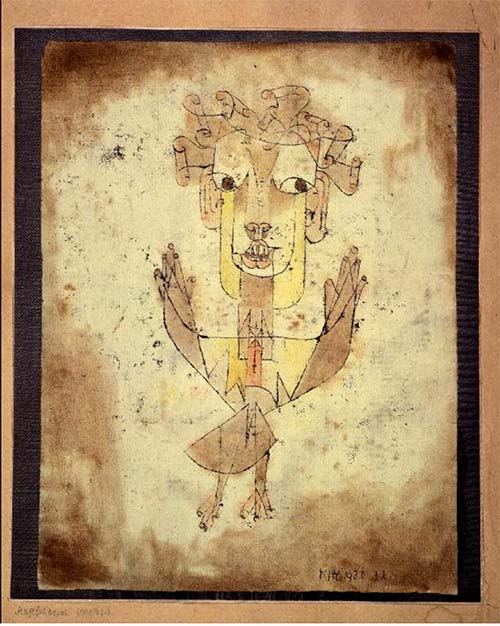
A Klee painting named ‘Angelus Novus’ shows an angel looking as though he is about to move away from something he is fixedly contemplating. His eyes are staring, his mouth is open, his wings are spread. This is how one pictures the angel of history. His face is turned toward the past. Where we perceive a chain of events, he sees one single catastrophe which keeps piling wreckage and hurls it in front of his feet. The angel would like to stay, awaken the dead, and make whole what has been smashed. But a storm is blowing in from Paradise; it has got caught in his wings with such a violence that the angel can no longer close them. The storm irresistibly propels him into the future to which his back is turned, while the pile of debris before him grows skyward. This storm is what we call progress.
Walter Benjamin, Thesis on the History of Philosophy
A Local Spirit - Research Film Studio Production.
Erika Kiss, Sigrid Adriaenssen, Chris Tully, John Higgins,
Grant from The New Institute, Hamburg
Prince’ Noir
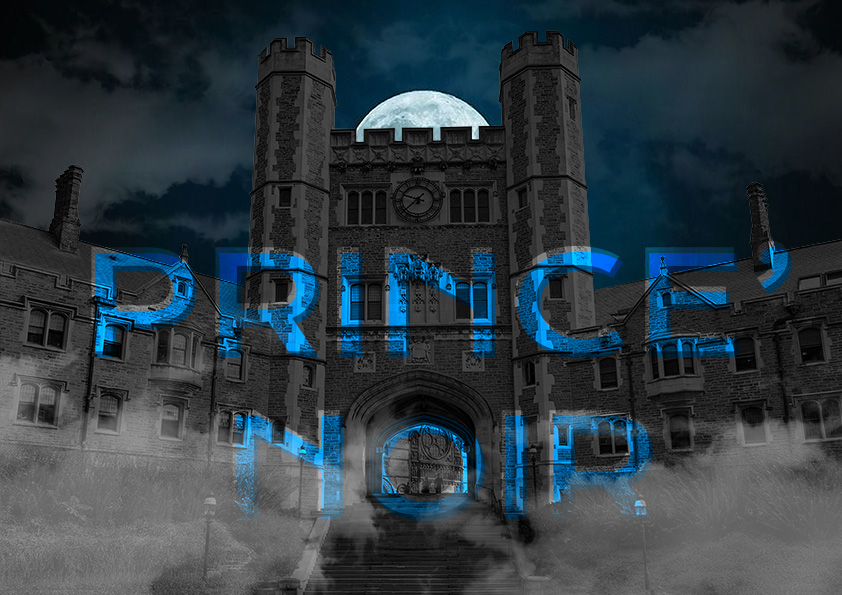
Prince’ Noir, or, Tales from the Campus is a short film based on three actual events that took place on the Princeton campus involving black students during the time when Woodrow Wilson (then known as Tommy) was an undergraduate. Two of these stories can be found in the ‘Princeton Slavery Project‘ website and one in Barksdale Maynard’s Wilson biography. The film will retell these tales from pluralistic points of view creating suspense and some confusion. One of the stories, however, positively uplifting. When five Southern students presented James McCosh with the ultimatum that either they leave Princeton or he expels his black student from his psychology class, President McCosh answered that “they would have to go, for under no circumstances would he exclude the Negro from his class so long as he wanted to attend.” Prince’ Noir is a campus film – nothing can prevent us starting production in the fall. We have several award-winning directors lined up to advise us on Zoom.
2021 Spring, current, Hidden History of Hollywood, Production book
Trinity
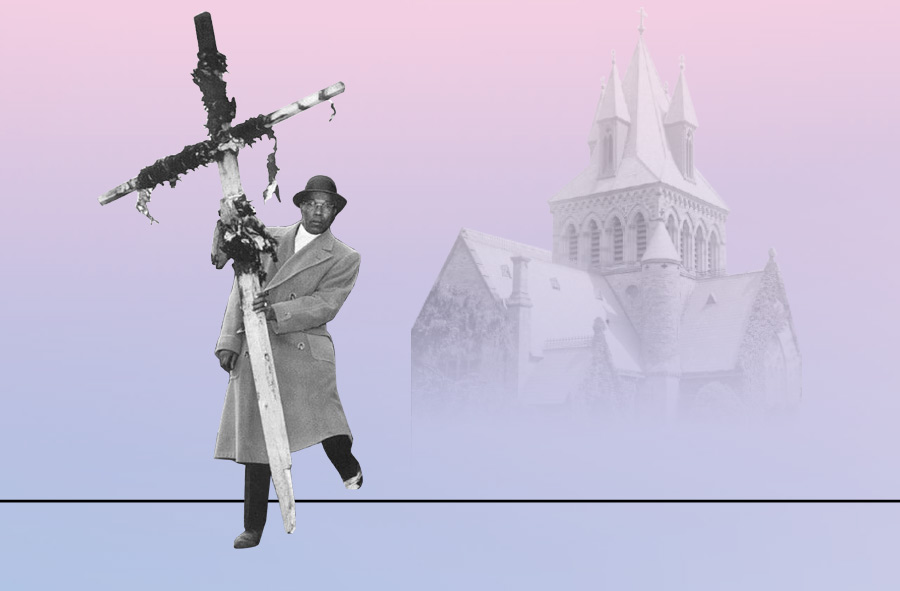
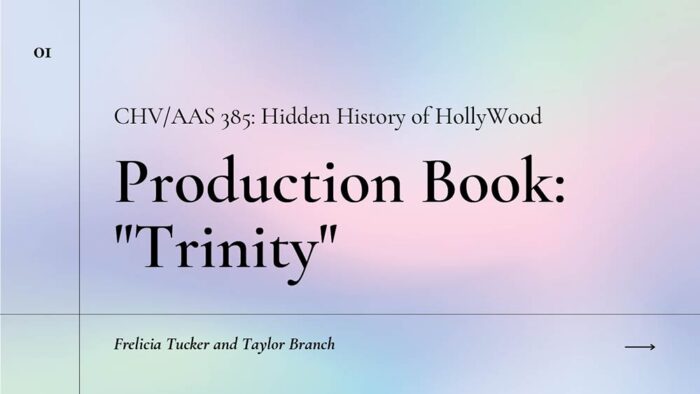
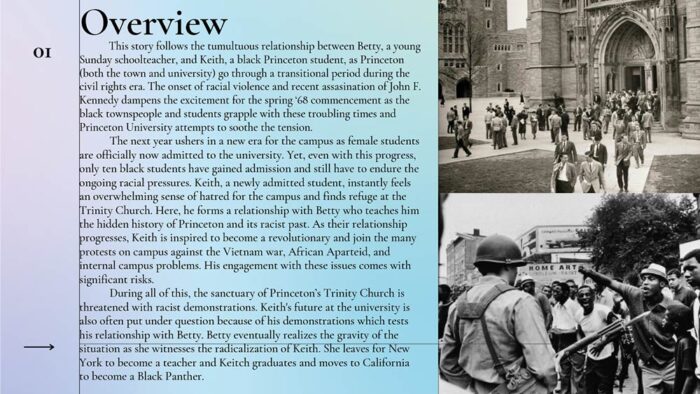
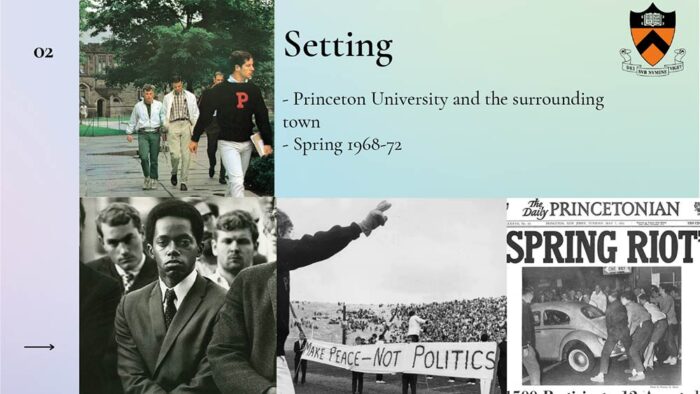
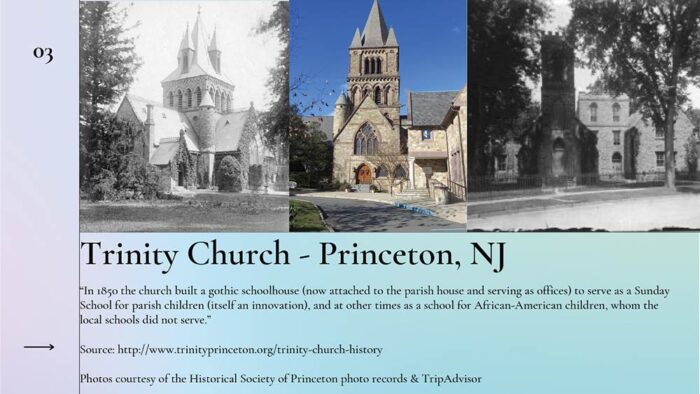
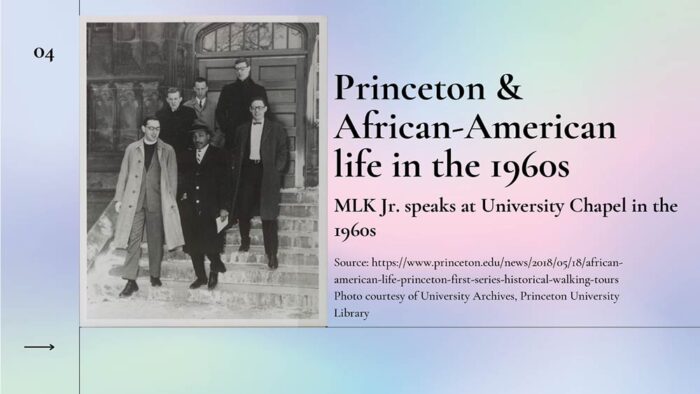
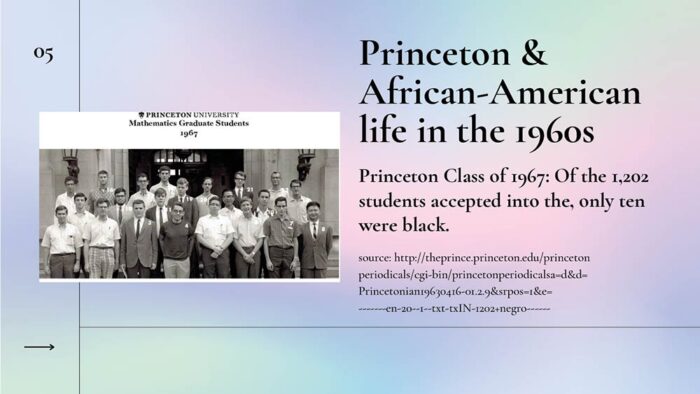
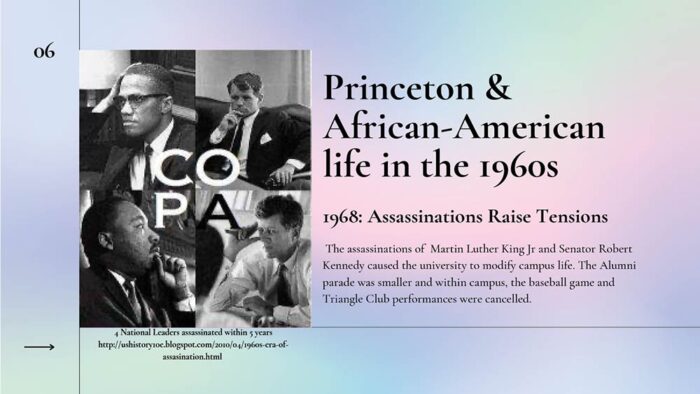
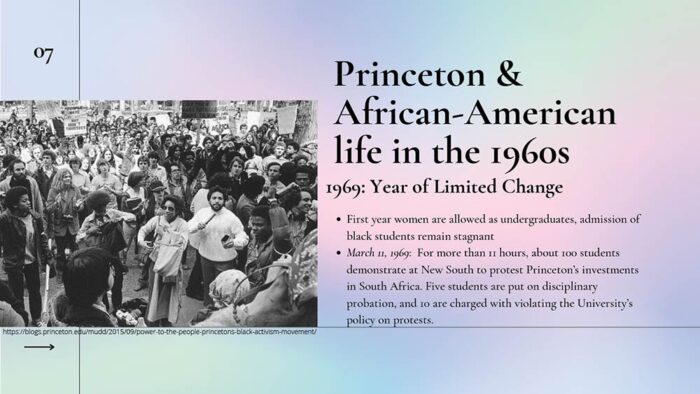
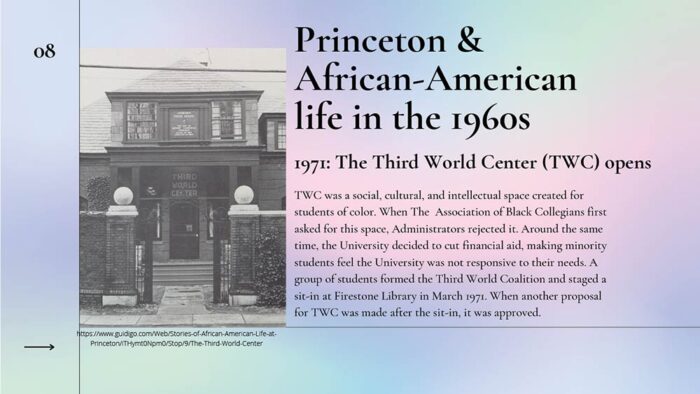
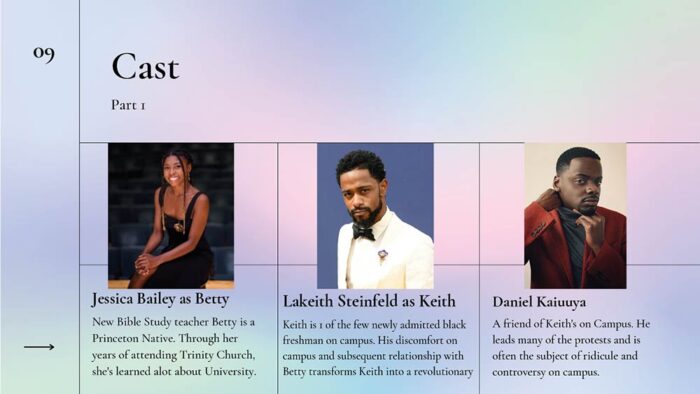
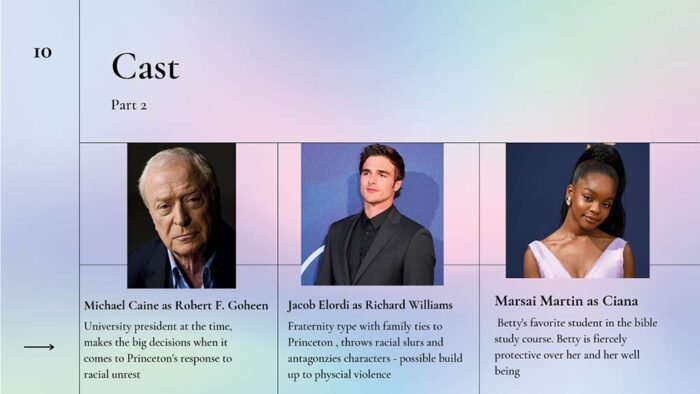
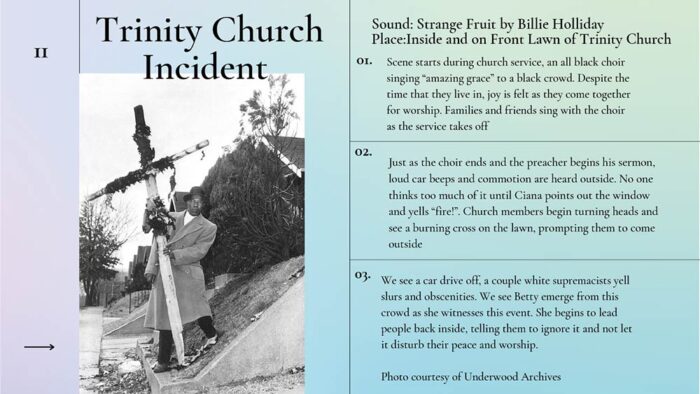
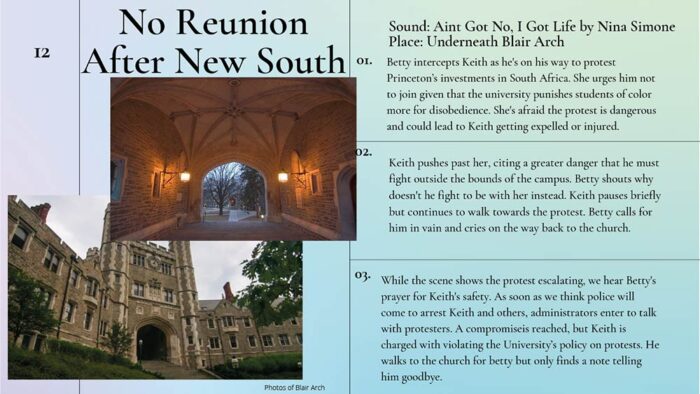
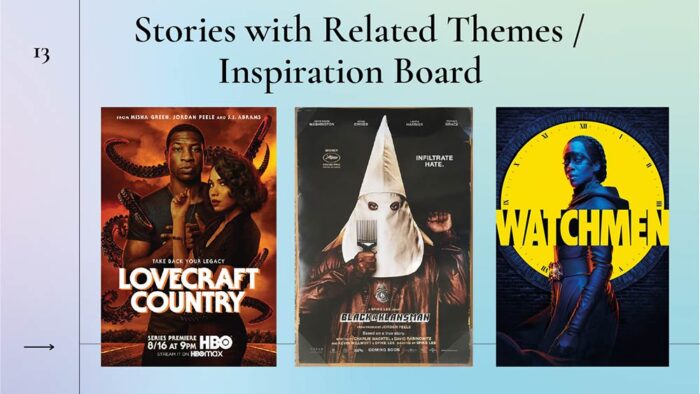
This story follows the tumultuous relationship between Betty, a young Sunday schoolteacher, and Keith, a black Princeton student, as Princeton (both the town and university) go through a transitional period during the civil rights era. The onset of racial violence and recent assasination of John F. Kennedy dampens the excitement for the spring ‘68 commencement as the black townspeople and students grapple with these troubling times and Princeton University attempts to soothe the tension.
The next year ushers in a new era for the campus as female students are officially now admitted to the university. Yet, even with this progress, only ten black students have gained admission and still have to endure the ongoing racial pressures. Keith, a newly admitted student, instantly feels an overwhelming sense of hatred for the campus and finds refuge at the Trinity Church. Here, he forms a relationship with Betty who teaches him the hidden history of Princeton and its racist past. As their relationship progresses, Keith is inspired to become a revolutionary and join the many protests on campus against the Vietnam war, African Aparteid, and internal campus problems. His engagement with these issues comes with significant risks.
During all of this, the sanctuary of Princeton’s Trinity Church is threatened with racist demonstrations. Keith's future at the university is also often put under question because of his demonstrations which tests his relationship with Betty. Betty eventually realizes the gravity of the situation as she witnesses the radicalization of Keith. She leaves for New York to become a teacher and Keitch graduates and moves to California to become a Black Panther.
2021 Spring, current, Production book, Student project
ICEVOICE
In this short film we're following a molecule of air (carbon dioxide) as it is transported around the world 3 million years ago, before it ends up in Antarctica and gets trapped between snowflakes and buried. This molecule of air is buried under kilometers of ice until today, when this air being drilled out in an ice core by scientists as a window into what the Earth was like 3 million years ago.
A Local Spirit-Research Film Studio production (John Higgins, Erika Kiss, Sigrid Adriaenssen, Chris Tully)
Video
Timefarer
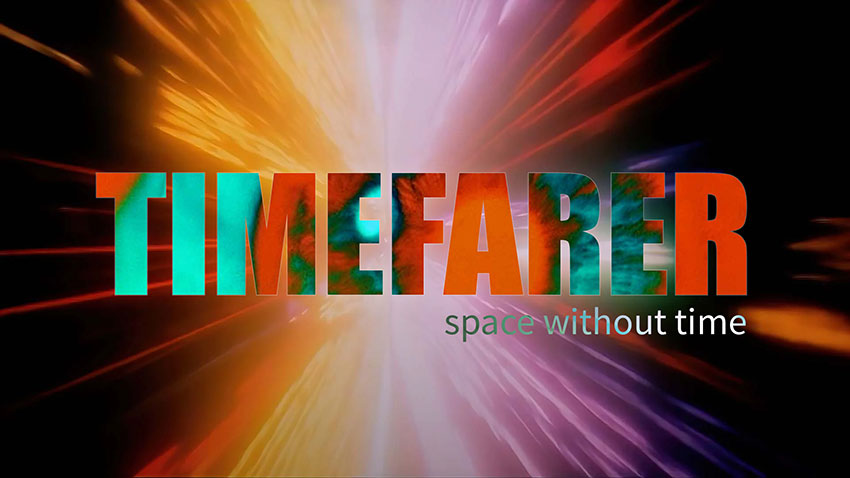
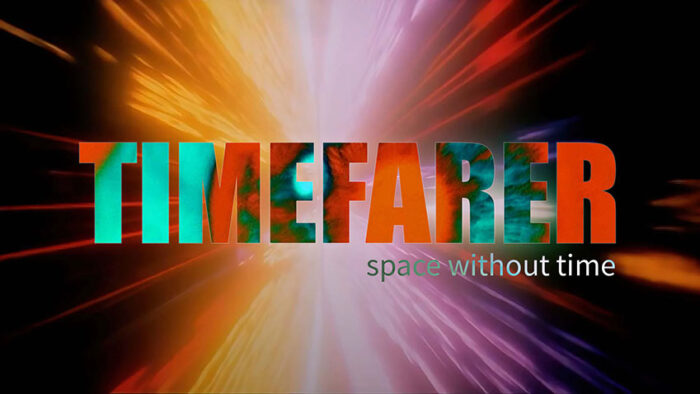
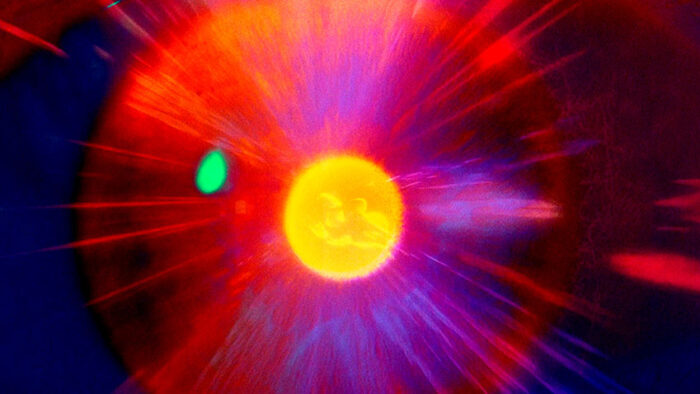
A Virtual Reality (VR) rendering of Kubrick's time-travel sequence from his "2001: A Space Odyssey”. Kubrick’s epic film gave us the first image of Planet Earth from an out of space perspective – a whole year before the analogue photo from Apollo 11 – showing that art can train imagination to advance knowledge by priming our cognition to take in the unexpected and unfamiliar that science discovers, and technology delivers. This is also the first film to give us a representation of Einstein’s theory of relativity: a very inspiring (some say psychedelic) sequence of time-travel that takes us back to the beginning of the universe. We will project the circa 10-minute sequence into a full-dome screen and record it with the 360-degree camera available in PU's Studio Lab. The VR film will be able to be viewed via headsets and can be used for educational purposes. We hope to learn the ropes of immersive filmmaking and maybe even reinvent the technology while figuring it out from scratch. The VR rendering of the time-travel sequence is an opportunity to extend beyond the limitations of the original film. Our short research film will be an ideal starting point for conveying a sense of the notion of a space without a sense of time and other complex ideas about the fundamental physics of the universe as well as the Big Bang.
A Local Spirit - Research Film Studio Production (Erika Kiss, Chris Tully, Sigrid Adriaenssens, John Higgins)
Awarded by the David A. Gardner ’69 Magic Grant
Virtual Reality
Astrophysics Senior Thesis
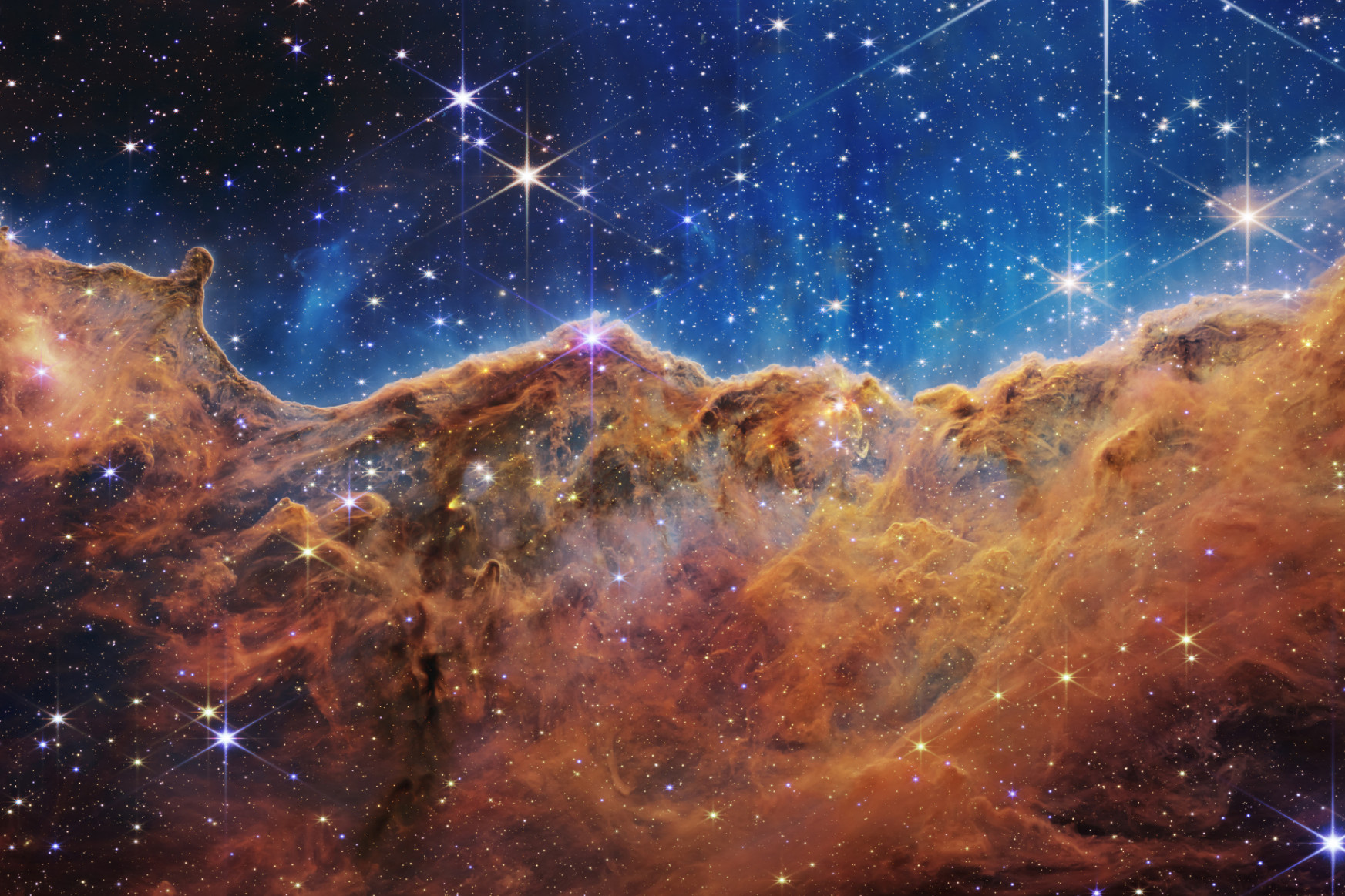
The Non-Human Perspective
Crip Camp – class interview
Class interview with the directors (Cinema in the Times of Pandemic, 2021 Spring).
2021 Spring, Cinema in the Times of Pandemic, Interview, Student project, Video
What goes into BlackFace (interactive)
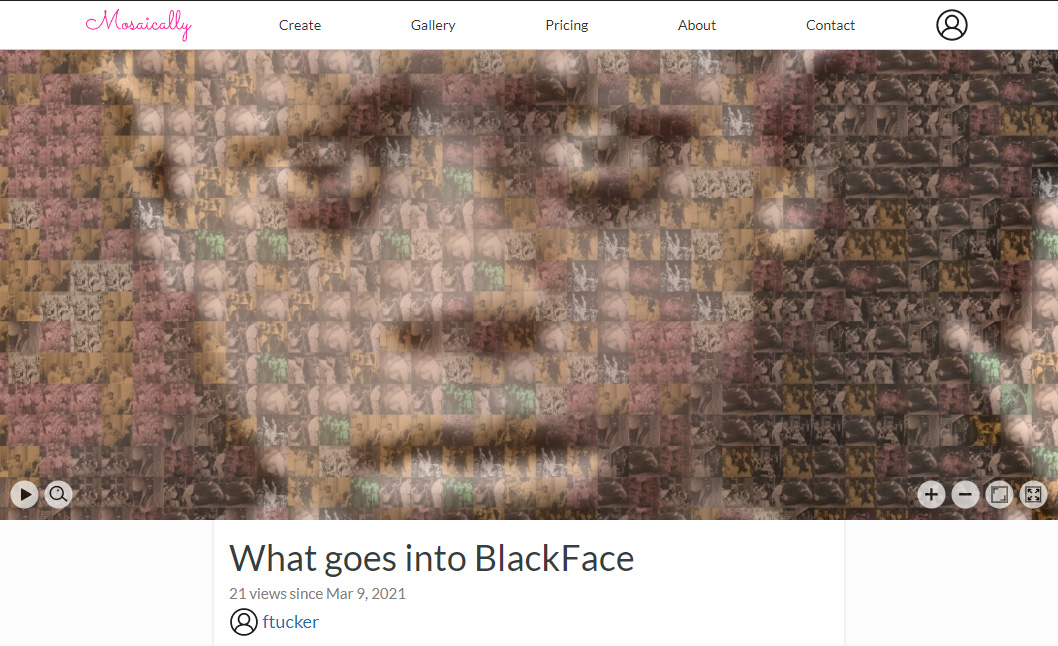
Frelicia Tucker, a Research Film Studio project (Hidden History of Hollywood, 2021 Spring)
2021 Spring, Hidden History of Hollywood, Interactive, Student project
What goes into BlackFace (video)
Frelicia Tucker, a Research Film Studio project (Hidden History of Hollywood, 2021 Spring)
2021 Spring, Hidden History of Hollywood, Student project, Video
Afro-American Homecoming
Samantha L. Johnson, a Research Film Studio project (Cinema in the Times of Pandemic, 2021 Spring)
2021 Spring, Cinema in the Times of Pandemic, Student project, Video
The Soul of a Nation
Frelicia Tucker, Taylor Branch, a Research Film Studio project (Hidden History of Hollywood, 2021 Spring)
2021 Spring, Hidden History of Hollywood, Student project, Video
Democratizing Film – with John Nein and Carlo Chatrian
Jemima O. Williams, a Research Film Studio project (Cinema in the Times of Pandemic, 2021 Spring)
2021 Spring, Cinema in the Times of Pandemic, Interview, Student project, Video
Class Interview with Agnieszka Holland
Aishah O. Balogun, a Research Film Studio project (Cinema in the Times of Pandemic, 2021 Spring)
